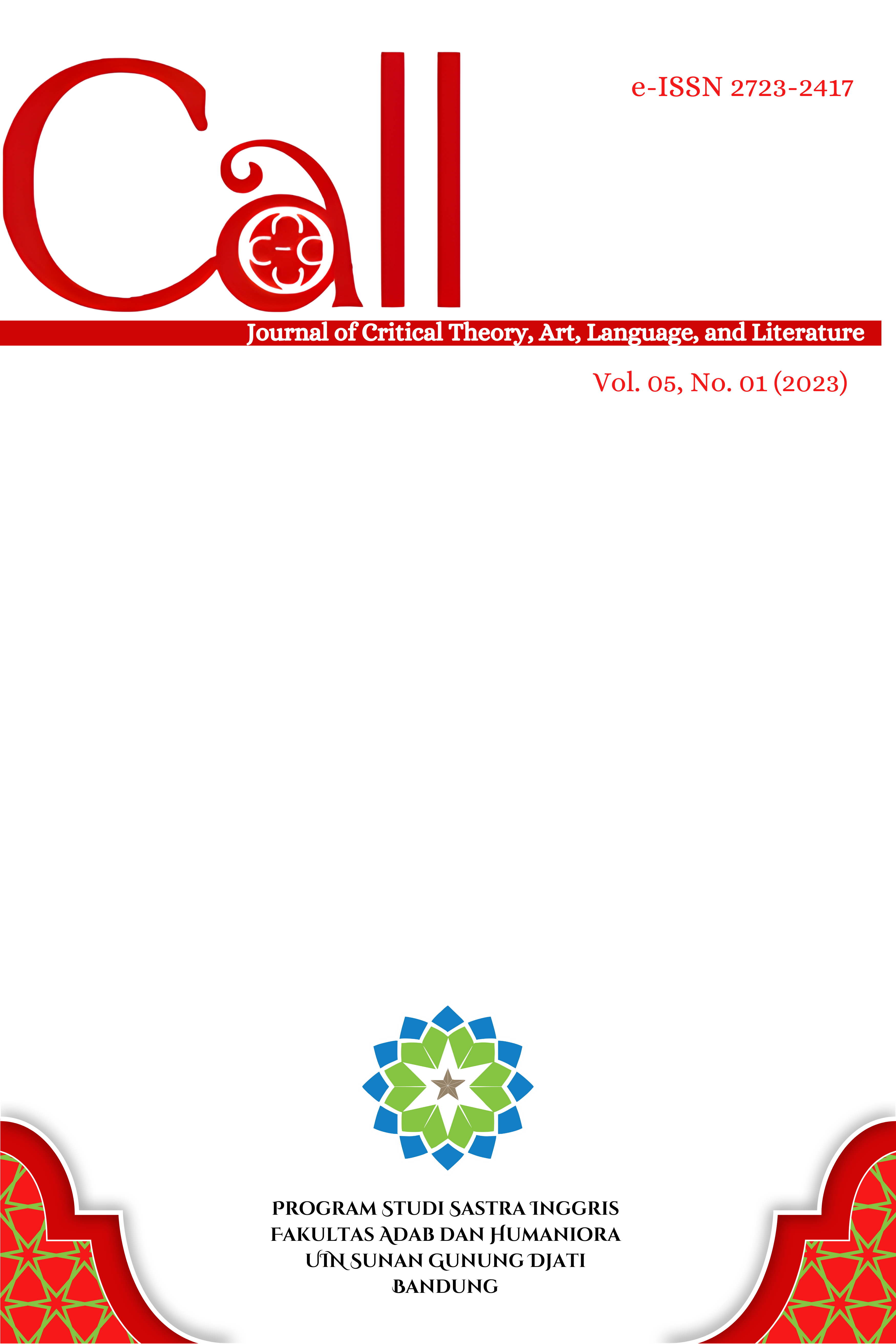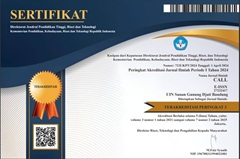CINEMATOGRAPHY IN GABRIELE MUCCINO’S THE PURSUIT OF HAPPINESS (2006)
DOI:
https://doi.org/10.15575/call.v5i1.19539Abstract
This study aimed to study cinematography elements presented in Gabriele Muccino’s The Pursuit of Happiness (2006). To analyse the object of the research, it used cinematography theory by Blain Brown. The study used descriptive qualitative research design. Drama genre is one of the biggest and popular genre in the movie industry, since it shares some empathy, hopes, aspirations, dreams and fears (Editors, 2018). It focused on analysing the dramatic aspect through cinematography using Gabriele Muccino’s The Pursuit of Happiness (2006) movie. The study found that many cinematography elements in Gabriele Muccino’s The Pursuit of Happiness (2006) are proven using dramatic aspect from both lighting and camera technique. In conclusion, the movie shows a drama genre movie which has cinematography elements that need to be added to deliver the emotion of the story and to increase dramatic elements in the movie.
Â
Keywords: cinematography, genre, drama
References
Brown, B. (2012). Cinematography: Theory and Practice: Imagemaking for Cinematographers and Directors (2nd ed.). Oxford, UK: Focal Press.
Cawelti, J., G. (1976). Adventure, mystery and romance: formula stories as art and popular culture. Oxford, UK: Blackwell Publishing.
Dukore, B., F. (1974). Dramatic Theory and Criticism: Greek to Grotowsky. New York, United States: Holt Reinhart and Winston.
Editors, T. (2018). Video: Roger Ebert on Empathy. https://www.rogerebert.com/empathy/video-roger-ebert-on-empathy
Heryanti, L., & Kasih E., N., E., W. (2022). The counter discourse of afro-american father as seen on the pursuit of happyness (2006) movie. Linguistics and Literature Journal, 3(2), 79-89
Hennig-Thurau, T., Ravid, S., A. & Sorenson O. (2021). The economics of filmed entertainment in the digital era. Journal of Cultural Economics, 45(1), 157–170
Kamalesh, V., Lakhotia, C., & Pandey, P. (2019). Influence of movie genre preference on empathy among emerging adults. IJIP, 7(4), 1-15
Lee, Y., J. & Liu, Y. (2022). Promoting oral presentation skills through drama-based tasks with an authentic audience: a longitudinal study. The Asia-Pacific Education Researcher, 31(1), 253–267
Moleong, L., J. 2006. Metodologi Penelitian Kualitatif. Bandung : PT Remaja Rosdakarya.
Muccino, G. (2006). The pursuit of happyness. Columbia Pictures.
Muller, V. (2006). Film as film: using movies to help students visualize literary theory. English Journal, 95(3), 32.
Ramrao, T., N. (2016). Film and literature : an overview research paper. Epitome Journals: International Journal of Multidisciplinary Research, 2(9), 149–156.
Sun, L. (2022). Research on the application of 3d animation special effects in animated films: taking the film Avatar as an example. Hindawi Scientific Programming, (2022), 1-7. Retrieved from https://www.hindawi.com/journals/sp/2022/1928660/
Tan, E., S. (2018). A psychology of the film. Palgrave Communications, 4(1): 1-20.
Teasdale, B., Maguire, L., Budelmann, F., & Dunbar, R., I., M. (2021). How audiences engage with drama: identification, attribution and moral approval. Frontiers in Psychology, 12(1), 1-11. Retrieved from https://www.frontiersin.org/articles/10.3389/fpsyg.2021.762011/full
Downloads
Published
Issue
Section
Citation Check
License
Authors who publish in CALL agree to the following terms:
- Authors retain copyright and grant the journal right of first publication with the work simultaneously licensed under Attribution-ShareAlike 4.0 International (CC BY-SA 4.0) License that allows others to share the work with an acknowledgment of the work's authorship and initial publication in this journal.
- Authors are able to enter into separate, additional contractual arrangements for the non-exclusive distribution of the journal's published version of the work (e.g., post it to an institutional repository or publish it in a book), with an acknowledgment of its initial publication in this journal.
- Authors are permitted and encouraged to post their work online (e.g., in institutional repositories or on their website) prior to and during the submission process, as it can lead to productive exchanges, as well as earlier and greater citation of published work (See The Effect of Open Access).




